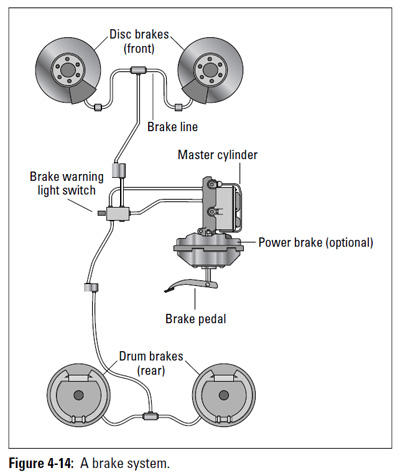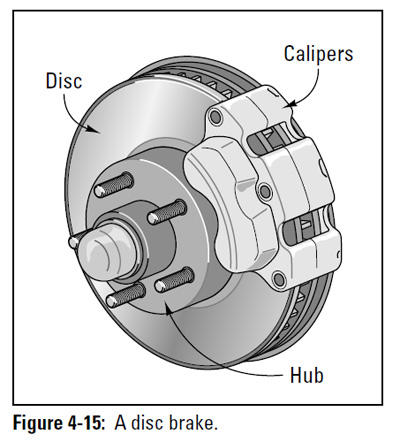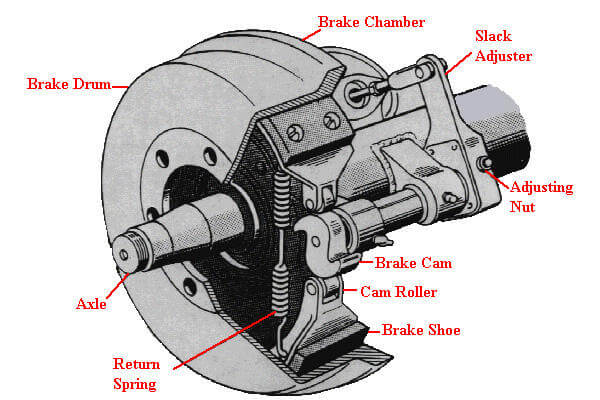It's time to learn about what goes on when it's time for your vehicle to stop. This is the job of the brake system (but you knew that, right?). Today, vehicles not only have hydraulic brakes — many have electronic brake systems, as well. Most modern vehicles come with anti-lock braking systems (ABS) that can prevent skids in slippery conditions and keep you in control of your vehicle until you can stop safely. Electric vehicles (EV) and hybrids feature regenerative braking systems that generate electric current to drive their electric motors.

Figure 4-14 shows you the major parts of a system with drum brakes at the rear wheels and disc brakes up front. Use it as you review the steps that follow, which give you a basic view of how a brake system operates.
1. To stop your vehicle, you step on the brake pedal.
2. The brake pedal pushes against a piston in a cylinder located under the hood. This part is called the master cylinder, and it's filled with a liquid called brake fluid.
3. When the piston in the master cylinder is pushed by your brake pedal, it forces the brake fluid out of the master cylinder into tubes called brake lines, which run to each wheel. (A power brake booster located between the brake pedal and the master cylinder increases the force applied to the piston in the master cylinder so that it takes less effort to stop your vehicle.)

4. Each wheel has either a disc brake or a drum brake. To keep it simple, I just look at disc brakes here. (Drum brakes work on the same general principle.) A disc brake is composed of a flat, iron disc (surprise!) sandwiched between a pair of brake pads by a caliper, as shown in Figure 4-15. The caliper contains one, two, or four pistons that force the friction material on the pads against the disc.
5. Brake pads located in the caliper on both sides of the disc grab the disc and force it to stop turning. This forces the wheel to stop turning. When the wheels stop turning, the vehicle comes to a stop.
6. When you take your foot off the brake pedal, the whole process is reversed: The brake pads release their hold on the disc, the fluid moves back up the brake lines to the master cylinder, and the wheels can turn freely again.
Four-wheel disc brakes are standard on most new vehicles. Other vehicles have disc brakes on the front wheels and drum brakes on the rear wheels. A few older vehicles have drum brakes all around.
From Auto Repair for Dummies, copyright © 2009 by Wiley Publishing, Inc., Indianapolis, Indiana. Used by arrangement with John Wiley & Sons, Inc.










